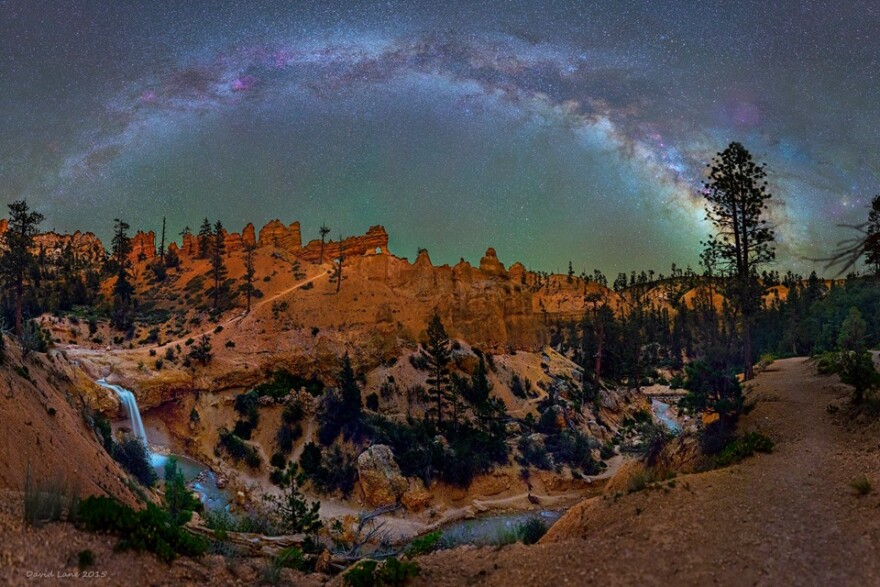For Kansas City photographer David Lane, the night sky is a canvas where he composes Milky Way-themed works of art.
“The glow that is in those pictures is from 250 billion suns," Lane says. "To see that represented, it helps give our place in the universe."
Lane is a "landscape astrophotographer," which means he photographs natural landmarks like Yellowstone or Yosemite National Parks and stitches them with panoramic images of the Milky Way galaxy. (Stitching is the process of connecting different photographic images of the same site, the way digital cameras make panorama shots automatically.)
As a child, Lane and his father would look through their telescope at Saturn, one of Jupiter's moons or constellations like the Pleiades. He enjoyed looking at the night sky, but never thought he could pursue astrophotography as a career.
“I thought I needed some expensive Hubble-like equipment that costs a billion dollars that only NASA scientists used,” he said in an interview with Central Standard host Gina Kaufmann.
Lane went on to work in real estate and antiques, and it wasn't until the age of 55 that he connected with amateur photographers who were exploring the cosmos. He noticed they were capturing good and affordable images from the comfort of their own driveways.
“Holy cow!” he said at the time, “You can basically do this on a $3,000 to $5,000 budget.”
Have camera, will travel

Now, David Lane travels all over the world, climbing over mountains and walking across deserts to find the landscapes he wants to photograph.
He’s been recognized by NASA for taking some of their Astronomy Pictures of the Day, and been acknowledged by Ripley’s Believe It Or Not for his work, Milky Way Over Yellowstone. Lane’s picture, Comet Lovejoy was featured in a Time Magazine story.
The Lovejoy shoot was special, Lane says, because the comet was overhead and viewable without much help from the sun. He photographed 42 separate two-minute images to capture it.
Photographic stitching
For most shoots Lane uses a regular Canon 6D camera with a 50mm lens, though cell phone shots as a reference. He takes up to 25 images of the same monument or landscape to stitch together digitally. Then he points his camera upwards to photograph the Milky Way in the same spot. He digitally superimposes his shots of the stars with the landscape.
Then, he will correct colors, bringing more light and contrast to his astral subjects. He says the picture is bound to have some distortions. He works to correct these during a Photoshop-like process called warping.
"It makes sure that everything in the picture is in its right spot and looks realistic," Lane said.
Lane challenges aspiring astrophotographers to start simple: go to a dark spot and look up at the sky in the summer when you can see the Milky Way.
“It’s virtually life-changing to be able to see that kind of light in the sky,” Lane says.
Glenn Frizell is an intern at KCUR 89.3.


